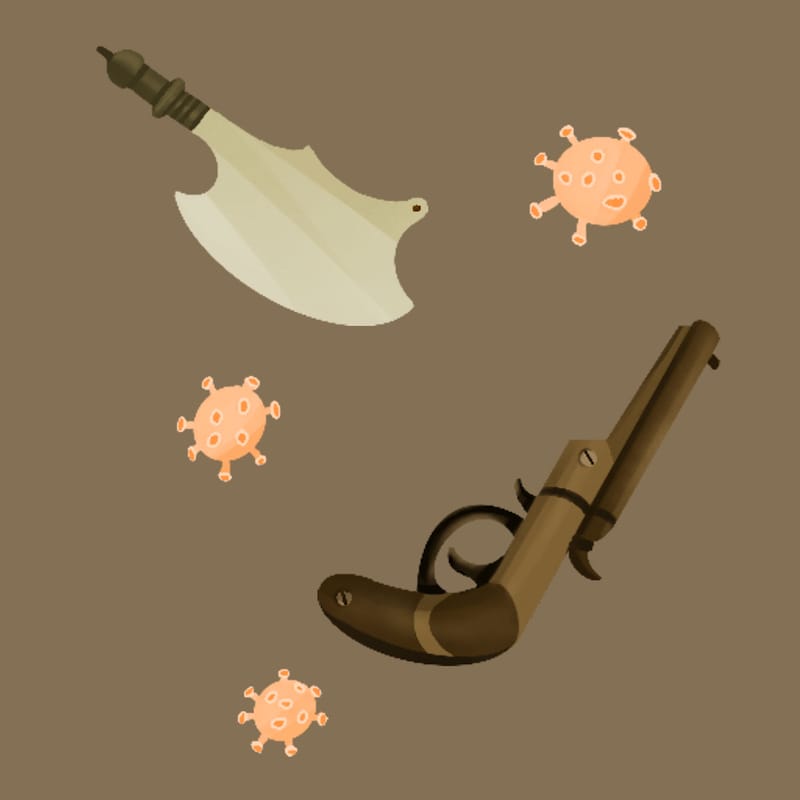Guns, Germs, And Steel
Guns, Germs, And Steel Full Book Introduction
Why did the inhabitants of the Eurasian continent conquer the American natives, instead of the other way around? Why are wheat, maize, and livestock like pigs and cows found in certain regions of the world and not in others? This book reveals the facts behind the broader environmental elements that have helped shaped the world’s history, thereby effectively refuting anthropological theories based on racism. It also records the underlying causes of the current situation and the many injustices visible in our modern world. This book can be considered as a true history of all the races and ethnicities of the world.
Author : Jared Diamond
Jared Diamond is a polymath spanning a wide range of fields including anthropology, ecology, physiology, and evolutionary biology. He is a current professor of geography and former professor of physiology at University of California, Los Angeles (UCLA). He is also a member of the American Academy of Arts and Sciences and the National Academy of Sciences, as well as an editorial board member of Skeptic magazine. Dr. Diamond has received a MacArthur Foundation Genius Award, in addition to research prizes and grants from the National Geographic Society. He is well-known for his popular science books such as The Third Chimpanzee; Guns, Germs, and Steel; Collapse; and Why Is Sex Fun?
Overview | Chapter 1
Hi, welcome to Bookey. Today we will unlock the book Guns, Germs, and Steel: The Fates of Human Societies.
In 1972, the author, Jared Diamond, was walking along the beach in New Guinea when a local friend Yali asked him, “Why is it that you white people developed so much cargo and brought it to New Guinea, but we black people had little cargo of our own?”
To his surprise, Dr. Diamond found it difficult to answer this seemingly simple question. Why is that so?
Yali’s question may seem like a simple question about the difference in the production of goods, but his question actually contains many hidden caveats. Why, for example, did the people of New Guinea still seem to be “living in the Stone Age” two centuries ago, while the Europeans already had a wide variety of inventions such as steel axes, gunpowder, garments, soft drinks, and umbrellas? Taking a closer look at the difference in lifestyles of these two groups of people, we may connect it to the broader spectrum of disparities in the modern world and ask: why is it that people of Eurasian origin (including those who have settled in North America) control most of the world’s wealth and power today? Moreover, some ethnic groups, like the indigenous peoples of Australia, the Americas, and Sub-Saharan Africa, no longer hold their homeland but have been subjugated or even wiped out.
Around the start of the 16th century, European countries began to occupy territories all over the world. Why was it the Eurasians who conquered and subjugated native peoples, rather than the native Americans, Africans, and Australian aborigines, conquering or subjugating the Eurasians?
Some people claim that around that time, Eurasia already had many advanced empires with all kinds of technological and weapons advantages that people in other parts of the world did not. It was these technological and political differences that led to the inequalities that we see in the world today. While this is an obvious answer, the deeper question remains as to what caused these differences in the first place.
Historically, certain groups have claimed that Europeans are naturally more intelligent and genetically superior to other races. Of course, today we know that such an explanation is not only racist and offensive, but also factually incorrect.
So, what is the true cause of these differences? In the years since his conversation with his friend, Dr. Diamond has conducted significant research into human evolution, history, and language, and he published Guns, Germs, and Steel twenty-five years later as an attempt to answer Yali’s question.
Like The Third Chimpanzee, which we unlocked in a previous bookey, Guns, Germs, and Steel has also won the Royal Society’s Science Book Prize for Dr. Diamond. In addition, it was a New York Times bestseller and has won the Pulitzer Prize for general non-fiction. The book reveals some broad environmental factors that have benefitted the historical development of certain regions of the world, thereby debunking anthropological theories based on race and racial superiority. At the same time, it offers possible causes for many of the inequalities that we see in the world today. It can be regarded as a true history of the peoples of the world.
In this bookey, we will introduce the book in three parts:
Part 1: Guns, germs, and steel;
Part 2: Time, flora and fauna, and geographical barriers;
Part 3: China, Oceania, and Africa.



